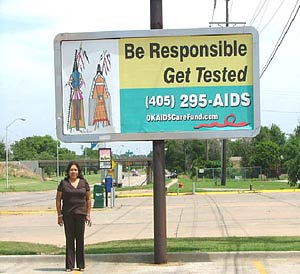Toolkit
The Community Readiness Model
The Community Readiness Model (CRM) is a nine
stage, multi-dimensional model to facilitate community change. The model was
developed 15 years ago at Colorado State University (Plested, Jumper-Thurman,
Edwards & Oetting, 1998)*. The
model is community-specific, issue specific and is designed to build cooperation
among systems and individuals as well as mobilizing a community into action.
The CRM has been used in Native communities throughout the United States and
Canada. It has been used for development of more successful and effective intervention
strategies for prevention of HIV/AIDS, drug and alcohol use, intimate partner
violence, suicide, and many other topics around social issues. It has been published
in over 30 articles and has documented numerous success stories. In 2006 the
First Nations Behavioral Health Association awarded CASAE a plaque for the contribution
of the CRM and its selection as one of the ten “effective practices” which
addresses the behavioral health needs of children and adolescents across Indian
Country.
The following resources and tools come courtesy of the Mountain Plains AIDS
Education and Training Center. We thank them for their hard work and commitment
to the fight against HIV in the American Indian /Alaska Native population. To
review a full listing of their resources and products, please visit www.mpaetc.org
Risk Reduction Notepad PDF
- 1MB
This simple, yet thorough risk-reduction “notepad” is a document
that can be utilized by providers, case managers, counselors, etc. to begin discussion
about prevention topics and agree to specific risk reduction strategies with
their patients.
Pocket
Antiretroviral Medication Chart Guide PDF
- 1MB
This colorful one-page chart to HIV Antiretroviral medications is a quick
visual guide to the many drugs available in both brand and generic nomenclature.
It may also be useful in identification of current meds and potential prevention
of medication errors.
Pocket
Primary Care Checklist for HIV Clients PDF
- 444KB
The Primary Care for the HIV Specialist checklist is a summary of the
many clinical components necessary for sound monitoring and evaluation of the
seropositive patient. It includes recommendations for screenings, exams, laboratory
work, etc. This does not replace the Clinical Guidelines for Treatment and Care
of HIV patients, however is a simple reference check-list or reminder for follow-up
care.
Behavior
Assessment and Discussion Prompts WORD -
140KB
This assessment tool is both quick and easy to understand for patients
and providers. The tool may be utilized by providers, case managers, counselors,
etc. to assess risky behavior and to begin discussion on important prevention
and behavioral issues.
Community
Readiness Model Interview Questions PDF - 34KB
This set of questions
represents the interview portion of the readiness model and part of the tools
needed for community assessment. The staff at the Center for Applied Studies
in American Ethnicity (CASAE) can assist if you are interested in this type of
community assessment. They are interested in building capacity in Native communities
and have many resources / tools to utilize. CASAE More information can be found
at their website.
*Plested, B.A., Jumper-Thurman, P., Edwards, R. W., & Oetting, E. R. (1998).
Community readiness: A tool for effective community-based prevention. Prevention
Researcher, (5)2, 5-7. www.happ.colostate.edu
Evaluating
STD Prevention Capacity Within
American Indian Tribes: A Comprehensive Assesment Tool (2006) PUB - 1,700KB
Project
Red Talon (PRT) and the Northern Plains Tribal Epidemiology Center (NPTEC) collaborated
to develop a comprehensive Tribal STD/HIV Capacity Assessment Survey. The survey
was administered to 37 tribes in Idaho, Oregon, Nebraska, North Dakota, South
Dakota, and Washington.
Native American HIV/AIDS Prevention Guidelines PDF
- 3,400KB
These guidelines represent the first national document for HIV/STD
prevention among Native American communities. The goal in the development of
these guidelines was to reflect the perspectives of a diverse group of HIV/STD
prevention specialists in Native communities, which include American Indians,
Alaska Natives, and Native Hawaiians.

This culturally fluent billboard - urging all to be tested and proudly displayed
in Oklahoma - was developed by the Oklahoma Native American AIDS Coalition and
Oklahoma Gay Natives organization. Native artist Frank Sheridan provided the
art work. The Oklahoma AIDS Care Fund provided the resources for the leasing
of the billboards and the signs. This may be the first billboard of its
kind to promote HIV screening to the American Indian / Alaska Native (AI/AN)
population and is a wonderful example of how advocacy, open discussion and raising
awareness can have potential positive impact on future AI/AN health. Pictured
standing is Ms Gloria Zuniga, RN, BSN, HIV/AIDS Program Director, Association
of American Indian Physicians.
Red Talon STD/HIV Resource Directory / Media Campaign / Tribal Advocacy Materials
This
page has multiple resources and information. It includes a directory, journal
articles, media campaign,
brochures, fact sheets, PowerPoint slides and tribal
health curricula tool kits.
The Red Talon project Media Campaign, “Stop
the Silence” offers posters,
Public Service Announcements, websites, logos and PowerPoint presentations. Please
visit this specific website at http://www.stopthesilence.org/ . The “Advocacy
Kit” contains information about AI/AN STD rates, the social and economic
impact of STDs on tribal communities, and steps that can be taken by tribal councils
to improve school-based, clinic-based, and community-based prevention efforts.
These are materials already developed to use for tribal leadership and advocacy!
The resource directory also has multiple links to additional resources and is
compiled specifically for prevention, care and treatment of American Indian /Alaska
Natives.
+ Top of Page






